Black Hand or The Black Hand may refer to:

William James Flynn was the director of the Bureau of Investigation from July 1, 1919, to August 21, 1921.
Nicolò Terranova, also known as Nicholas "Nick" Morello, was one of the first Italian-American organized crime figures in New York City he succeeded Giuseppe Morello as boss of the then Morello Gang in 1909 and was succeeded by Vincenzo Terranova in 1916. Along with his half-brother Giuseppe Morello and brothers Ciro and Vincenzo Terranova, he founded the Morello crime family, and was later one of the participants in the Mafia-Camorra War of 1915–17.
A barrel murder was a method for disposing of the bodies of people killed by early American mafiosi since the 1870s, although the earliest recorded barrel murders in New York were reported in 1895 and 1900.
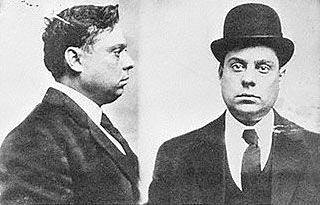
Ignazio Lupo, also known as Ignazio Saietta and Lupo the Wolf, was a Sicilian American Black Hand leader in New York City during the early 1900s. His business was centered in Little Italy, Manhattan, where he ran large extortion operations and committed other crimes including robberies, loan-sharking, and murder. By the start of the 20th century, Lupo merged his crew with others in the South Bronx and East Harlem to form the Morello crime family, which became the leading Mafia family in New York City.

Vito Cascio Ferro or Vito Cascioferro, also known as Don Vito, was an Italian criminal who was a prominent member of the Sicilian Mafia. He also operated for several years in the United States. He is often depicted as the "boss of bosses", although such a position does not exist in the loose structure of Cosa Nostra in Sicily.

Ciro Terranova was an Italian-born New York City gangster and one time underboss of the Morello crime family.
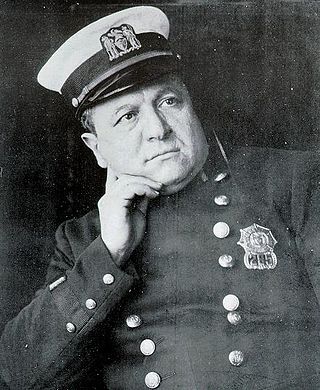
Joseph Petrosino was an Italian-born New York City Police Department (NYPD) officer who was a pioneer in the fight against organized crime. Crime fighting techniques that Petrosino pioneered are still practiced by law enforcement agencies.
Shotgun Man is an alleged assassin and spree killer active in Chicago, Illinois in the 1910s, to whom murders by Black Hand extortionists were attributed. Most notably, Shotgun Man killed 15 Italian immigrants from January 1, 1910, to March 26, 1911, at "Death Corner," a notoriously violent Italian immigrant neighborhood at the intersection of Oak Street and Milton Avenue in what was then Chicago's Little Sicily. The area was notorious for violence committed by Italian immigrants and Italian-Americans, both independently and as a result of Italian gangs, the Mafia, and Black Hand feuding and vendettas. In March 1911, the so-called Shotgun Man reportedly murdered four people within 72 hours.
Michael Fiaschetti was a prominent New York detective and succeeded Lt. Joseph Petrosino as head of the NYPD's "Italian Squad".
The American Mafia, commonly referred to in North America as the Italian-American Mafia, the Mafia, or the Mob, is a highly organized Italian American criminal society and organized crime group.

Black Hand extortion was a criminal tactic used by gangsters based in major cities in the United States. In Chicago, Black Hand extortion began around 1900 and had all but faded away by 1970, replaced by the Mafia. The Mafia was initially organized by Johnny Torrio and further organized by Al Capone into the extant Chicago Outfit sometime later. Black Handers in Chicago were mostly Italian men from Calabria and Sicily who would send anonymous extortion notes to their victims emblazoned with a feared old country symbol: the "Black Hand". The Black Hand was a precursor of organized crime, although it is still a tactic practiced by the Mafia and used in organized crime to this day. The Black Hand gangsters of this time period differed from the Mafia by lacking formally structured hierarchies and codes of conduct, and many were essentially one-man operations. Black Hand blackmail was also common in New York, Boston, and New Orleans. Victims would be threatened with being beaten, shot, or have their place of business bombed if they did not pay. Starting around 1909, Black Hand activity was causing difficulties for mob boss Big Jim Colosimo, a former Black Hand gangster and owner of brothels throughout Chicago. Colosimo's life was being threatened with demands for cash to ensure his physical safety. In an effort to fix the problem, he recruited Johnny Torrio, who was a member of New York's Five Points Gang at the time, to come to Chicago. Torrio would later become the famous successor to Big Jim Colosimo and mentor Al Capone as the organized crime ruler of Chicago.

Pay or Die is a 1960 American biographical and crime film directed by Richard Wilson and starring Ernest Borgnine, Zohra Lampert, Howard Caine, Alan Austin, and Robert F. Simon.
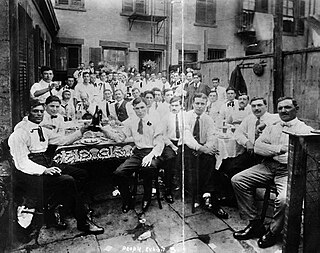
The Brooklyn Camorra or New York Camorra was a loose grouping of early-20th-century organized crime gangs that formed among Italian immigrants originating in Naples and the surrounding Campania region living in Greater New York, particularly in Brooklyn. In the early 20th century, the criminal underworld of New York City consisted largely of Italian Harlem-based Sicilians and groups of Neapolitans from Brooklyn, sometimes referred to as the Brooklyn Camorra, as Neapolitan organized crime is referred to as the Camorra.

Giosuè Gallucci, also known as Luccariello, was a crime boss of Italian Harlem in New York City affiliated with the Camorra. He dominated the area from 1910–1915 and was also known as the undisputed "King of Little Italy" or "The Boss", due to his power in the criminal underworld and political connections. He held strict control over the policy game, employing Neapolitan and Sicilian street gangs as his enforcers.

Black Hand is a 1950 American film noir directed by Richard Thorpe and starring Gene Kelly as an Italian immigrant fighting against the Black Hand extortion racket in New York City in the first decade of the 20th century.
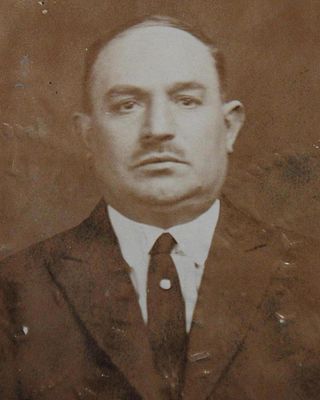
Nicolo "Cola" Schiro was an early Sicilian-born New York City mobster who, in 1912, became the boss of what later become known as the Bonanno crime family.
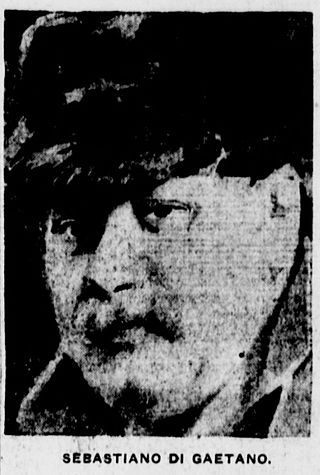
Sebastiano DiGaetano was an Italian-born American New York City mafia boss of what would later become known as the Bonanno crime family. He briefly attained the title capo dei capi of the Sicilian-American mafia, after Giuseppe Morello had been convicted of counterfeiting money in 1910. DiGaetano stepped down as boss of his crime family in 1912, and disappeared shortly thereafter.
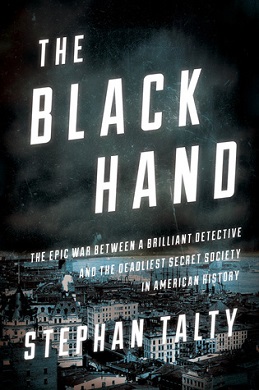
The Black Hand: The Epic War Between a Brilliant Detective and the Deadliest Secret Society in American History is a non-fiction book written by Irish American author Stephan Talty, published by Houghton Mifflin Harcourt on 25 April 2017.
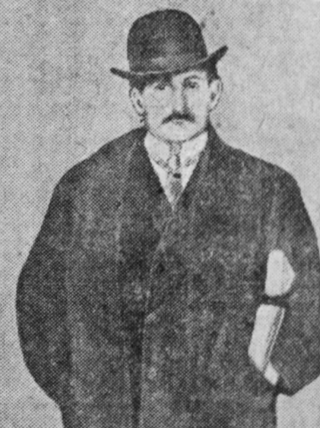
Antonio Mirabito was a notorious Italian immigrant who was believed to be the boss of a network of Black Hand gangs located in the Northeastern Region of the United States in the early 20th century. He was the first person in New England to be arrested for crimes associated with Black Hand. His arrest was widely publicized and he was punished heavily in hopes of demoralizing others who were participating in the growing practice, which was a predecessor to the Mafia. He left his career in crime after he married and had 9 children.















